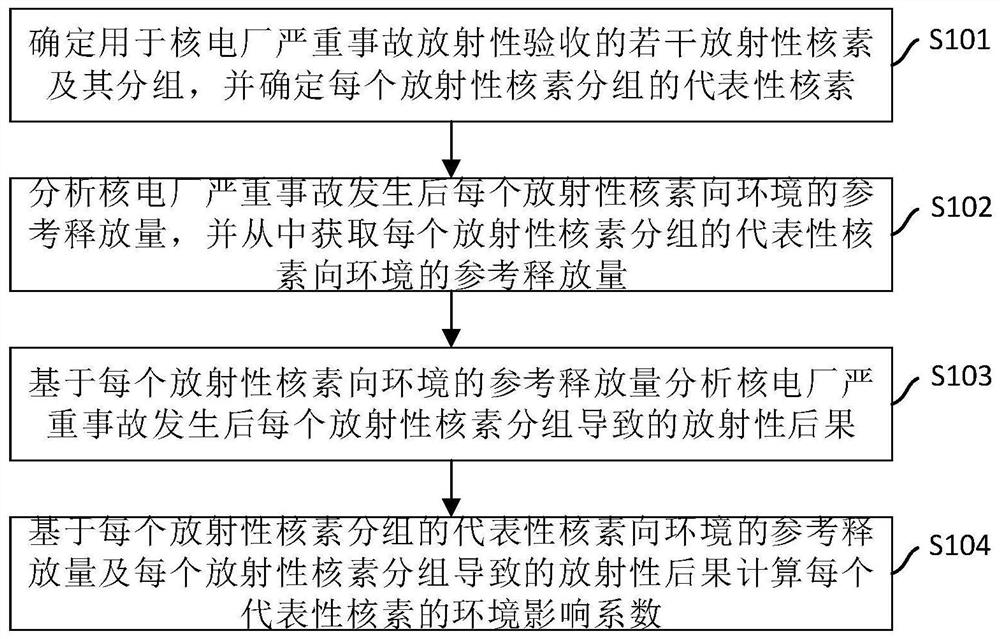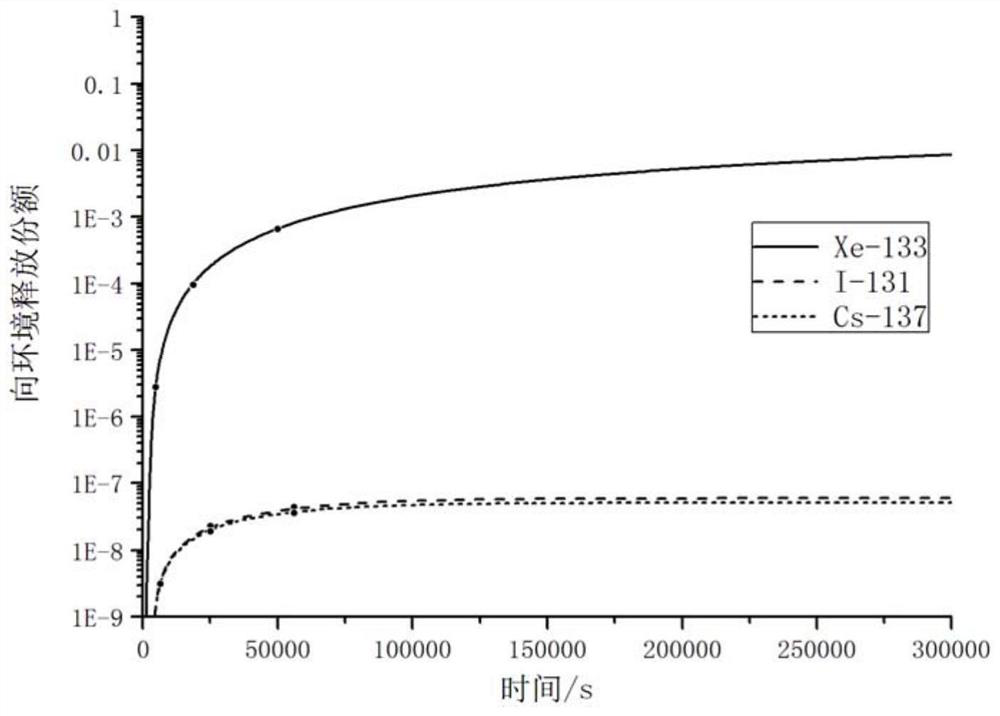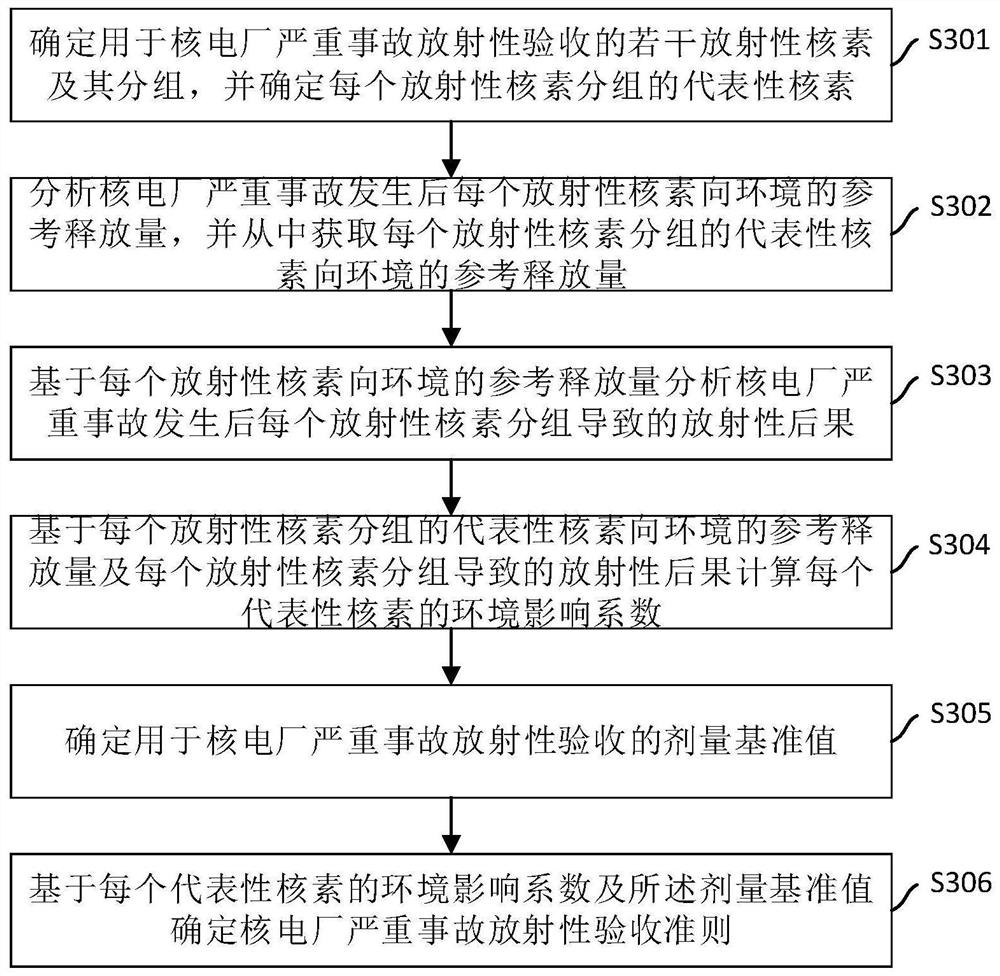Environmental influence coefficient calculation method and radioactivity acceptance criterion determination method
A technology of environmental impact and calculation method, which is applied in the field of radioactive acceptance of serious accidents of nuclear power plants and the determination of radioactive acceptance criteria for serious accidents of nuclear power plants.
- Summary
- Abstract
- Description
- Claims
- Application Information
AI Technical Summary
Problems solved by technology
Method used
Image
Examples
Embodiment Construction
[0047] In order to make the purpose, technical solutions and advantages of the embodiments of the present disclosure clearer, the specific implementation manners of the present disclosure will be described in detail below in conjunction with the accompanying drawings. It should be understood that the specific embodiments described here are only used to illustrate and explain the present disclosure, and are not intended to limit the present disclosure.
[0048] It should be noted that the terms "first" and "second" in the specification and claims of the present disclosure and the above-mentioned drawings are used to distinguish similar objects, and not necessarily used to describe a specific order or sequence; Moreover, the embodiments and the features in the embodiments in the present disclosure can be combined with each other arbitrarily if there is no conflict.
[0049] Wherein, the terms used in the embodiments of the present disclosure are only for the purpose of describin...
PUM
 Login to View More
Login to View More Abstract
Description
Claims
Application Information
 Login to View More
Login to View More - R&D
- Intellectual Property
- Life Sciences
- Materials
- Tech Scout
- Unparalleled Data Quality
- Higher Quality Content
- 60% Fewer Hallucinations
Browse by: Latest US Patents, China's latest patents, Technical Efficacy Thesaurus, Application Domain, Technology Topic, Popular Technical Reports.
© 2025 PatSnap. All rights reserved.Legal|Privacy policy|Modern Slavery Act Transparency Statement|Sitemap|About US| Contact US: help@patsnap.com



